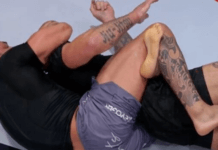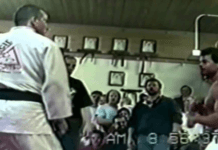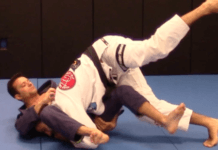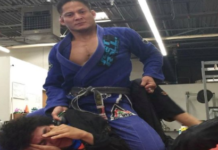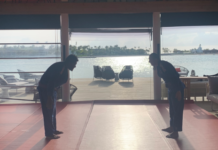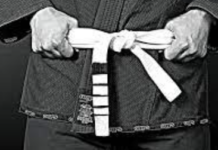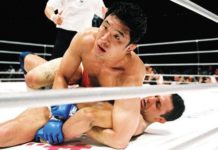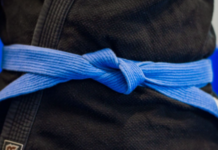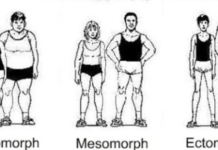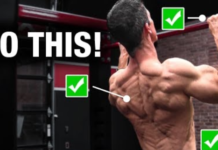There are many techniques in Brazilian jiu jitsu. To the beginners, all those guard variations, submissions, and techniques can be bit overwhelming. There are certain basic jiu jitsu techniques you should focus on first to have an easier start in this amazing martial art. In the article below check out our list of 10 basic jiu jitsu techniques that will improve your game.
Technique 1: Side Control Escape
Side control escapes are the most widely used moves that when properly acknowledged will have a huge impact on one’s journey from first rolls to black belt. In this technique, moving one’s hips from the bottom should be learned as it is the basis of all escapes and this is the first one you need to know.
The two most important hip movements that will aid in escaping the bottom in BJJ include bridging and hip escape.
Your utmost priority at the point where your opponent has passed your guard is to change your guard as well. Once you become an expert in the side control techniques, you will also be able to grasp a lot of information and counters to guard retention in BJJ. These movements are quite homogenous and involve multiple carry-overs between techniques; it is up to the performer on how much often does he want to do this variation during the combat phase.
Common mistake
Most contestants make here is that they try to bench press their opponent off of them instead of putting their arms to use to build frames.
Technique 2: The Scissor Sweep
The scissor sweep will help you in learning everything, including the fundamentals and the advanced elements, that are used for all sweep techniques for breaking the opponent’s guard and leaving him exposed for an opportune moment.
Some of the elements of sweep techniques are: Distorting the opponent’s balance, moving yourself in a different position to gain an angle by hip movement, not allowing your opponent to post a hand by controlling the grips, thus significantly shifting the battle in your favor, and lastly utilizing the power of your legs and not relying much on the upper body.
When you want to do multiple attacks in succession, the scissors sweep technique works very well because of its high cohesion with other guard techniques, such as the triangle and cross collar choke. This makes the scissor sweep a very useful element of your combination and it shows off its versatility.
Common Mistake
Before attempting to scissor the legs of the opposition and throw him off balance most beginners fail to do a sharp pull.
Technique 3: The Triangle Choke
The triangle choke is one of many signature submission moves in BJJ. People of all tiers of martial arts experiences, whether they are a white belt or a high-level international competitor such as an MMA fighter, are able to utilize it. This move works for both gi and no-gi styles.
When faced with someone who is larger, stronger or has ample experience as a wrestler, the triangle choke can turn the odds in your favor as it shines as a threat from below for your opponent. This move teaches you how to use your legs to attack, cross them in a way around your target’s head and put them in a submissive position, thus causing a choke.
The triangle choke can be transitioned to be performed from various guard stances or position thereby making it a versatile and unpredictable move. First, you will learn how to perform the triangle choke via understanding its basic and core mechanics than in the future, you will figure out the many options leading to and from there.
Common mistake
People attack with the triangle choke while the opponent has a strong posture. Your chances of success will be low if the opponent has a strong or sturdy grip of this aspect because posture is the best defense against the triangle.
Technique 4: Cross Collar Choke from Guard
On the ground, the cross collar grip serves as the starting point through which you can proceed to perform your attacks and sweeps. This makes the cross collar choke a great technique for initiation and you can also transition it from your guard stance giving it a more versatile quality.
The technique used in laying the basis down for a closed guard strategy is the basic collar and sleeve grip it is the initial point for your moves such as attacks leading from a guard or the two techniques that were mentioned before.
The cross collar choke move can be used to dismantle the opponent’s posture and reduce him to a weakened state; this is done when you use your grip to control your foe’s head.
Helio Gracie, the founder of BJJ, used this move which was followed up from a guard to choke a Japanese challenger unconscious during an old memorable match. This was his favorite attack from the guard.
Common Mistake
The first hand needs to get deep into the target’s collar. You need to reach out very far into the collar and ‘grab the tag’ at the back of the opponent’s net.
Technique 5: “UPA” / Bridge and Roll Escape vs. Mount
Powerful hip bridges act as the beginning to almost all of the escapes on the ground thus making it a very useful aspect when it comes to following through.
When confronted with a mount, it is very crucial to keep in mind the capabilities of your hip and powerful bridge. Making full use of your strongest muscle groups is one of the very core principles of BJJ so for performing this move you do not rely on the strength of your arms. Instead, you are using your thighs, hamstring and the lower back to push your opponent off of you and get rid of his mount.
If you intend to break the mount by bench pressing your way out when your opponent has an opportunity to perform an armbar so, when learning BJJ, new students must be encouraged to get rid of the habit of pushing away via the arms. To obtain a very successful escape from the ground, the student can use the bridge and roll technique, without it he will be stuck or left with no other option but to give up his back.
Common Mistake
You need to trap the opponent’s arm when bridging otherwise they can post the arm defensively and maintain the top position.
Technique 6: Mount Position
The mount position is also called the ‘King of all Jiu-Jitsu Positions’. The mount is a powerful yet a very complex move which has to be mastered over time. The most important details that can help to improve.IF you are interested in more basic jiu jitsu positions check this article.
Balance is the key to master this position. It should be instinctive and pure focus should be on your attack. Make the mount position on a partner and have him place his hands behind his head, do the same yourself. Then make him buck you off while you maintain your balance. This drill will teach you the sensitivity required to perform this position without using your hand. Make sure your feet are tucking under your opponent’s body when you are in the mount position.
Any space between your feet and opponents is an opportunity for him to trap your ankles. People have the misconception of squeezing their opponent between their knees while doing the mount position, but many mount-specialists do the mere opposite of this trick. While keeping their feet tucked, they widen their knees and lower their hips into the opponent. This greatly improves the balance.
Types of the mount position
There are different types of mount position that you can work with.
Low mount: you are lying flat, with your legs wrapped around your opponent. The low mount gives you the maximum amount of control and nullifies the bridge of your opponent. It’s not the best option for submission.
Technical mount: This mount is usually utilized to counter the most common mount defense, the elbow knee escape. This way you can maintain a good attacking position.
High mount: The most lethal of variation is the high mount. It’s best to choose one from these variations and to master it completely.
Know when to transition:
No matter how good of a job you are doing at holding the mount, your opponent will be able to power out. There comes a point where there is no use of trying to get out of his escape. If you can identify this point it’s time to change your tactics.
Technique 7: Americana lock
The Americana lock is also well known as bent arm lock, key lock, and the top wristlock. It is a common grappling submission which consists of the attacker controlling the opponent’s arm. Using the double wrist control which leaves the opponent’s joint vulnerable to submit to the attacker.
Difference between the Kimura lock and Americana lock:
The difference between both locks relies on the fact the where the opponent’s forearm is pointing if the forearm is pointing towards the hip the position is called Kimura when the forearm was pointing up it is called an Americana.
The Americana will teach you the principle of using 2 limbs of yours against the opponent’s limb. Understanding the opponent’s anatomy of the shoulder joint will help you use leverage to take your opponent out.
Common mistake
Allow the opponent’s elbow to get away from your body. By Making the distance between elbow and body, opponent releases the tightness in the shoulder joint. That will allow him to straighten his arm and escape.
Technique 8: The Toreando Guard Pass.
The toreando is the Portuguese word given to the act of bullfighting. It is the name for the motion that bull fighter does to avoid the bull just as it rushes in.
This pass begins with the opponent grabbing the inside of both of your knees, starting with this as a baseline when he grabs your knees to start pinning them.
A good tip is if your feet are in the air you should make a chair sit position, but as soon as your feet hit the floor make sure your body is off the mat.
The advantage of this pass is that the opponent is going to grab more or less in the same place every time. Among many ways of dealing with this grip is to simply kick your feet out at a 45 degree angle, straightening your legs as you do this and turning your wrist up for better tension.
Surviving
If you lose the grip battle entirely, it’s going to be time to recover guard in some way. The toreador effectively gives you the same grip fight it has been for the last 20 years. The two grip strips, coupled with the elbow can help you survive initially. You must sweep or submit your opponent in short order and have to survive accordingly.
Technique 9: Hip Bump Sweep.
This sweep is perfect if your opponent is sitting back on his heels. It usually doesn’t work if your opponent’s posture is leaning forward. When the opponent moves backward to defend it is a good time to the hip bump sweep.
Description:
- Open legs with both feet on the mat.
- Sit up and to the right using your right elbow on the mat.
- As you sit up, block your opponent’s left elbow
- As you sit up, explode your hips into your opponent as high as you can while continuing to block the elbow.
This hip bump is great sweep to use for so many reasons. Not only can you end up in the top position, but depending on how our opponent reacts, there is a series of attacks you can do. There are submissions we use to counter those who try to defend against the sweep.
Technique 10: The armbar from guard.
The armbar from guard is a classic in Brazilian Jiu-Jitsu. It can be very hard to execute for some people because it’s easier to get confused with the gripping, shifting, adjusting and swiveling. This is one of the most basics jiu-jujitsu moves.
Description:
1. Grab the arm of your opponent. You want their elbow above the belt and in the center of your body.
2. Put your left foot on their right hip. The reason why you want to do this is to lift your hip close to their shoulder.
3. Move your right leg over to your left knee and swing body around.
4. Check their ear with your left hand.
5. Bring your left leg above the opponent’s head.
6. Squeeze your knees and lift your hips to execute the armbar and you get the tap.


